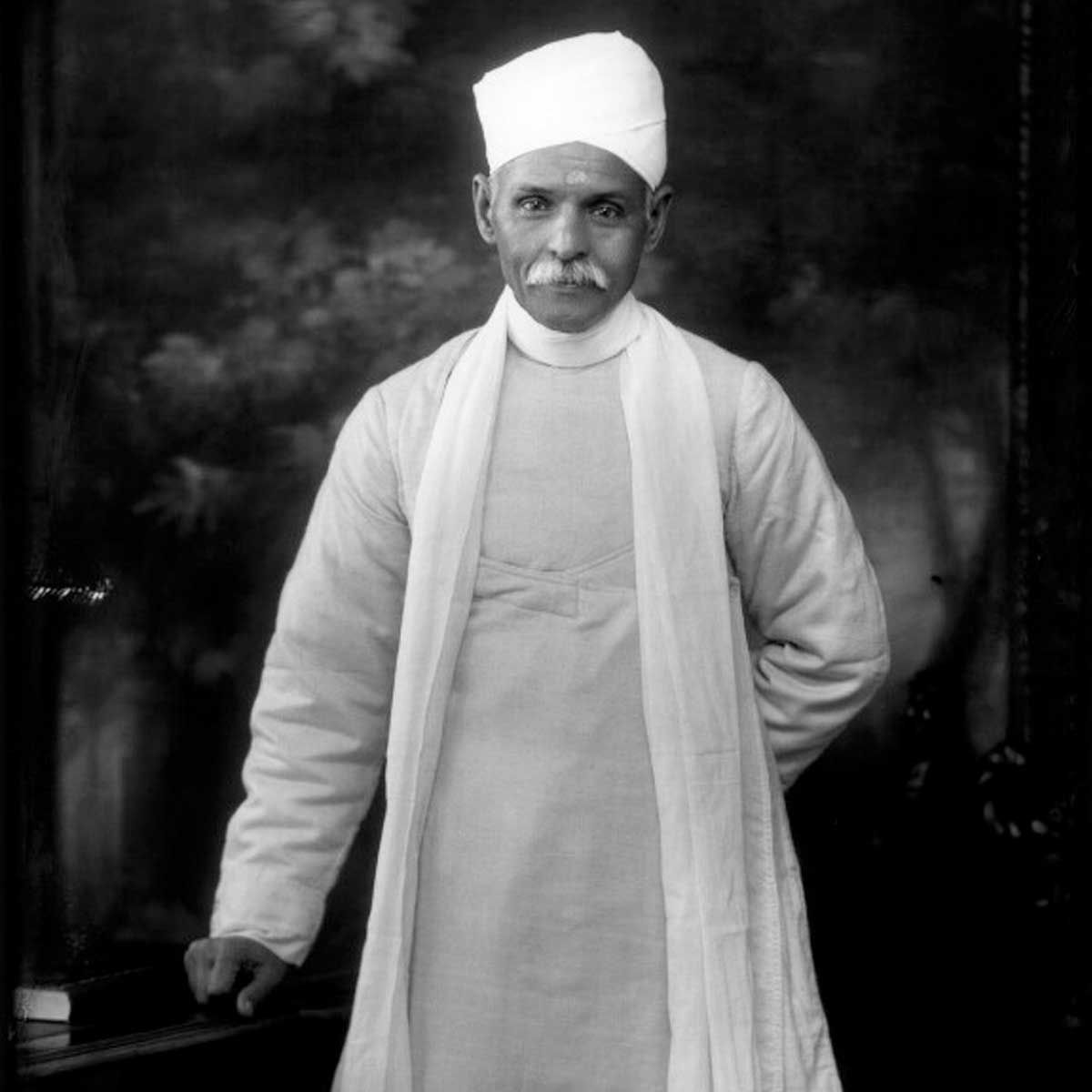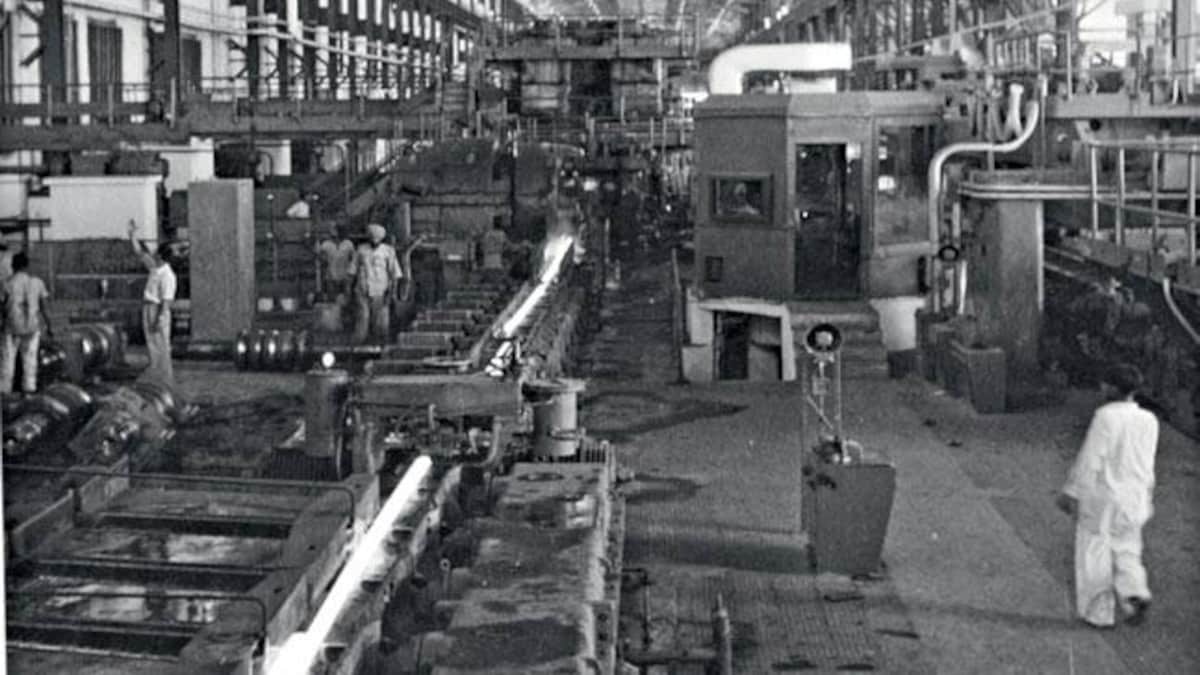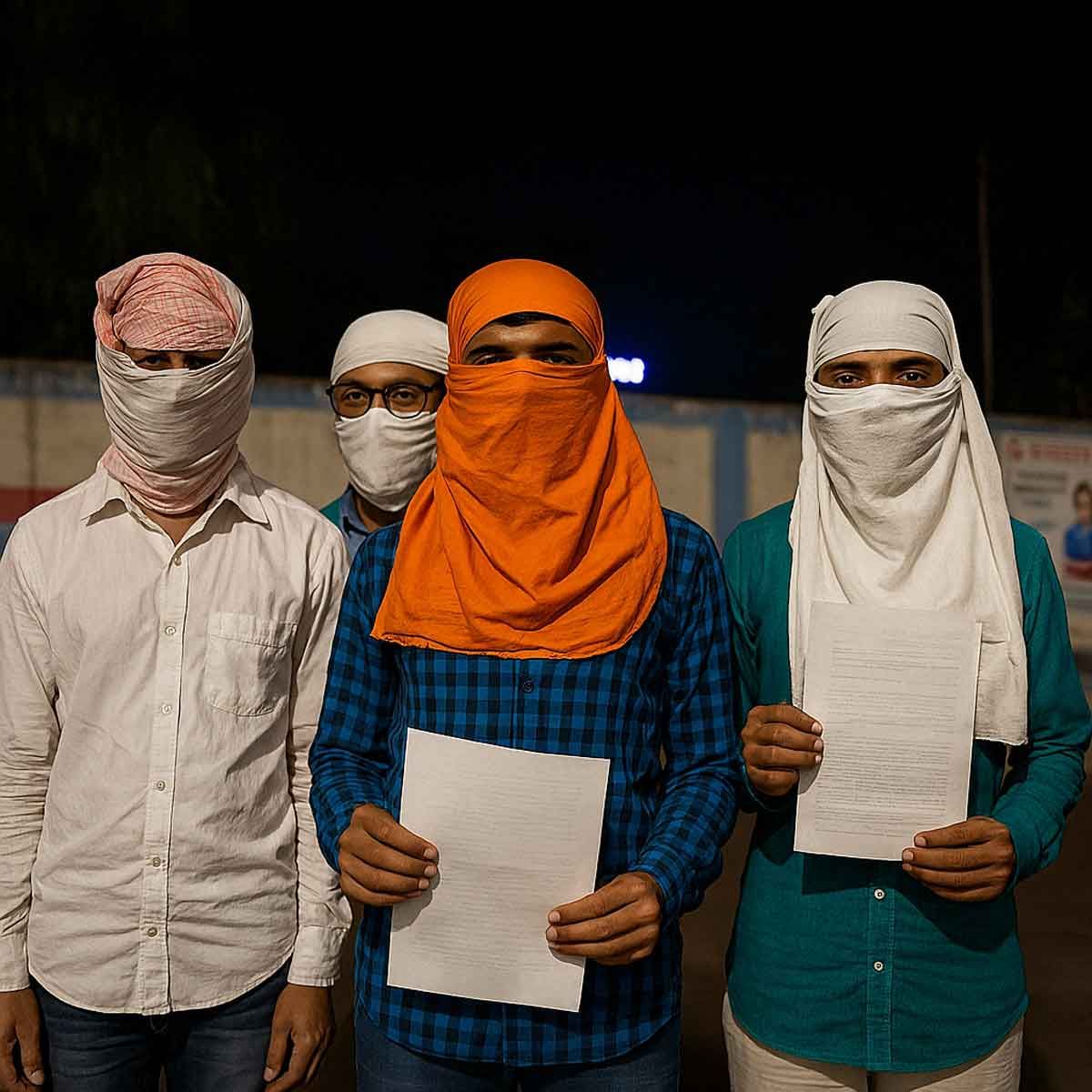More Coverage
Twitter Coverage
Satyaagrah
Written on
Satyaagrah
Written on
Satyaagrah
Written on
Satyaagrah
Written on
Satyaagrah
Written on
JOIN SATYAAGRAH SOCIAL MEDIA
Pt. Madan Mohan Malaviya’s independent ‘Note’ to the Industrial Commission of 1916: India’s Industrial Heritage

If India appeared as a palimpsest to those who wrote on her history in the yesteryears, history of education in India is an equally competent palimpsest spanning thousands of years if not more. On restricting the scope to engineering education for its pedagogy and content in large that we recognize and associate with today, we need to go no further than the last 200 years.
The lofty samudra manthan of the yore resulted in amṛta, a panacea for immortality and in a strictly metaphorical sense one can look at the Industrial revolution of relatively recent past as another human intervention that has also resulted in providing comfort as well as sustenance to the human life.
Machination and advancements in use of engineered tools were the primary consequences of the revolution and with it the need for engineering education had also emerged as a significant outcome. Industrial Revolution impacted India, the then colony of Britain, in several ways which directly and indirectly has had its longstanding effect on the origin, design as well as implementation of technology.
In the context of Banaras Hindu University (BHU) and particularly in the initiation of the Benares Engineering College (BENCO) with which BHU made its beginning, the link to the industrial revolution can be averred at ease. The links emerge when we look at that facet of the colonial India which was loathed upon by the then constituted committee, the Industrial Commission, which, in its utmost wisdom and rationale, without mincing words went on to highlight the inconspicuousness of industry, dearth of the right mentality and technical cum physical incapability for her citizens to embrace industrialization in a pace similar to her colonial masters and counterparts elsewhere in the western part of the world.
 Sir T. H. Holland |
The Industrial Commission: Its Genesis and Terms of Reference
On March 21, 1916 Ibrahim Rahimtoolla moved a resolution in the Viceroy’s Legislative Council for appointment of a Commission to report on the measures that should be adopted for the growth and development of industries in India and towards the same end he urged that the fiscal autonomy should be granted to the Indian Government as an essential step.
The industrial commission was constituted with the following members:
| S.No. | Names | Role in the committee |
| 1 | Sir T. H. Holland, K.C.S.I., K.C.I.E.,D.Sc.,F.R.S. | President |
| 2 | Mr. Alfred Chatterton, C.I.E., B.Sc., F.C.G.I., A.M.I.C.E., M.I.M.E. | Member |
| 3 | The Hon’ble Sir Fazulbhoy Currimbhoy Ebrahim, Kt., C.B.E. | Member |
| 4 | Mr. Edward Hopkinson, M.A., D.Sc., M.I.C.E., M.I.M.E., M.I.E.E. | Member |
| 5 | The Hon’ble Mr. C. E. Low, C.I.E., I.C.S. | Member |
| 6 | The Hon’ble Pandit Madan Mohan Malaviya B.A., L.L.B. | Member |
| 7 | The Hon’ble Sir Rajendra Nath Mookerjee, K.C.I.E. | Member |
| 8 | The Right Hon’ble Sir Horace Curzon Plunkett, P.C., D.C.L., L.L.D., F.R.S., K.C.V.O. | Member |
| 9 | The Hon’ble Sir Francis Hugh Stewart, Kt., M.A., C.I.E. | Member |
| 10 | Sir Dorabji Jamsetji Tata, Kt., J.P. | Member |
| 11 | Mr. R. D. Bell, I.C.S. | Secretary |
| 12 | Mr. G. H. W. Davies, I.C.S. | Joint Secretary |
This committee went ahead to pen the report which comprised of nearly 300 pages which included nearly 50 pages of an independent note by Malaviya ji. This independent note was a strong rebuttal to the contents of the report. Looking retrospectively we can safely surmise that it was both the collective wisdom of this committee and the extraordinary clarity of Malaviya ji suffused with his legal acumen that the report and the note were published as a single document, in fairness of full disclosure.
An interesting side fact is that two of the committee members went ahead to open two of the mightiest educational institutions of our country that has stood the test of time for hundred years namely the Indian Institute of Science and Banaras Hindu University!
Selective Highlights from the report
The report makes the opening with a highly condescending note right from the first chapter and this tone as well as the tenor continues throughout the subsequent chapters in the report. In summary, India was projected as a country that had not yet embraced industrialization and how it was not capable to do so with all its deficiencies and idiosyncrasies. For instance, let us have a look at the following paragraph from the report:
“The first chapters of the Report deal with India as an industrial country, her present position and her potentialities. They show how little the march of modern industry has affected the great bulk of Indian population, which remains engrossed in agriculture, winning a bare subsistence from the soil, by antiquated methods of cultivation. Such changes as have been wrought in rural areas are the effects of economic rather than of industrial evolution.”
The report goes on to say, “India produces nearly all the raw materials necessary for the requirements of a modern community; but is unable to manufacture many of the articles and materials essential alike in times of peace and war. For instance, her great textile industries are dependent upon supplies of imported machinery and would have to shut down if command of the seas were lost.”
These are just the few excerpts to illustrate the very mindset with which this report was written. The committee perhaps was more inclined towards finding faults than facts that could boost the general morale of the colony. Likewise the first chapter despises on the sorry state of the non-industrialized India by citing one dearth after the other. Whereas the first chapter was in general exposition of the inadequacies of our country, the next one particularly targeted at the Indians and their ineptitudes. It opened thus:
“The next chapter deals with the “Indians in Industries.” They discuss measures designed to improve the efficiency of the Indian artisan and to encourage the educated Indian to take part in industrial enterprise. It is shown that the relative lowness of wages paid to Indian labour is counterbalanced by the comparative inefficiency of the individual Indian workman.”
Not only the blatant bigotry of the colonizers gets exposed in this excerpt, the committee’s sophistry to justify its ill deeds is indeed noteworthy. Whereas the committee takes into cognizance the disproportionate and differential wages paid to Indian and non-Indian workmen, it goes on to institutionalize and justify the discrimination on frivolous grounds.
 |
The committee went ahead to even invoke the societal variations due to heredity while giving a rationale to the ineptitude of the Indian workforce. The report says,
“The general aversion from the industrial pursuits of the educated Indian is ascribed to hereditary predisposition accentuated by an unpractical system of education. A complete revolution in the existing methods of training is proposed.”
The existing methods that the committee is referring to is the result of the policy changes brought about half a century before this committee was formed by one of their own Lords. The overhaul of a stagnant system is always a welcome attribute but without resorting to the genesis of the rot in the system and squarely blaming the system for what it stood before the committee when they saw it, not only ill behooves the stature and the rationale of the learned committee but also raises serious doubts on the veracity of the report penned by men with perhaps clouded intellects.
Whereas the committee’s primary demand was the establishment of a department of Industries at both the provincial and imperial level, in the modus operandi the scientific and industrial heritage of the civilizational nation suffered a collateral damage. The report left no stone unturned while belittling the colonial India.
The civilizational nation which flourished in both economic and knowledge dimensions for thousands of years suffered such a pitiable plight in the hands of her invaders and colonizers. But the amber of India’s intellect had not completely cooled off. Few sparks of it lay hither and thither which did act as agents of change and some even resulting in revolution.
One such spark was Malaviya ji whose indomitable spirit, love for the nation and sharp intellect arose to the occasion and single handedly gave fitting response to the mischievous aspersions in the report through his separate note which he ensured to get published along with the committee’s report and it did happen this way.
Perhaps his first hand involvement in this committee which exposed him to the nuanced approaches of the colonial masters coupled with his deep love for the country reinvigorated his resolve to dedicate his life for the establishment of BHU and its growth thereafter, through which he blew life into his note of to the Industrial commission’s report.
Pt. MM Malaviya’s independent ‘Note’ to the Industrial Commission of 1916
The commission’s report, besides all its critical observation and documentation, gave the following two proposals:
- That in the future Government must play an active part in the industrial development of the country, with the aim of making India more self-contained in respect of men and material….
- That it is impossible to undertake that part, unless provided with adequate administrative equipment and forearmed with reliable scientific and technical advice…
Perhaps these two points appeared as faint rays of hope to Mahamana ji which should have reinforced his sankalpa for building an educational institution which will not only equip the Indian youth in the technology, engineering, science etc of the day along with copious injunction of the wisdom from the Indian yore. Mahamana ji did not quietly rest with this faint optimism rather he took this opportunity to present the glory and richness of India from her ancient days through the various onslaughts of invasion.
Mahamana ji in fact showed the white elephant in the room to the committee as well as the higher authorities by way of penning a strong note which in fact served as a fact check for the observations in the report regarding the poor state of the Indian industries in particular and on the general caliber of her people. It was through Malaviya ji’s sharp intellect, acumen of unambiguous convincing logical arguments and lucid recollection of vital evidences that in fact gives befitting rebuttal and thereby uplifting the glory of our civilizational nation.
 |
Mahamana ji employed a unique style and logic while penning his note which was responsible for making it indefatigable. And this style was not to write his opinions or emotions or judgments but rather to quote official documents from the British Empire authored by British administrators and thereby rendering his note beyond any possible refutation.
True to the nyāya sutra of “siṃhāvalokana” Malaviya ji held the gaze of a lion by first giving a copious exposition of the civilizational India’s past scientific heritage and industrial glory in order to rebut the commission’s report.
Malaviya ji tactfully quotes from the metaphorical horse’s mouth vis a vis those foreigners, including British officers who had visited India at different points of time.
Malaviya ji coherently conveys in his note that there has been a major scale devastation of three longstanding and well flourishing industries of India, namely:
- The cotton and textile industry
- The iron industry
- Ship making and shipping industry
Malaviya ji’s laments on the invader’s onslaught of these industry not only reveals the sufferings of the Indians at the hands of her invaders, also reveals the sagacious and sophisticated capacity of Indians in both industry as well as commercial enterprises. Malaviya ji quotes one officer after the other to initially to reveal each of these industry’s glory and then goes on to also show how it suffered and underwent decay.
One should not get an impression that Malaviya ji was indulging in cherry-picking while writing his note for there are ample evidences to show, both from the breadth of this note as well as the vast cross references that he has cited besides the independent verification of facts from other sources that the reader deems fit.
He starts with Prof. Weber who was the author of the “History of India” and Malaviya ji quotes him while referring the cotton industry of India. Prof. Weber says, and Malaviya ji quotes,
““the skills of the Indians,” says Professor Weber, “in the production of delicate woven fabrics, in the mixing of colours, the working of metals and precious stones, the preparation of essence and in all manner of technical arts has from early times enjoyed a world-wide celebrity.” There is evidence that Babylon traded with India in 3000 B.C. Mummies in Egyptian tombs, dating from 2000 B.C., have been found wrapped in Indian muslin of the finest quality….
Thus it may be safely concluded that in India the arts of cotton spinning and cotton weaving were in a high state of proficiency two thousand years ago…..Cotton weaving was only introduced to England in the seventeenth century”-(Imperial Gazetteer of India, Volume III, page 195)”
Malaviya ji goes on and gives copious evidence to show the glory of the cotton industry that not only thrived in India but also traded with hinterlands both and near far. He next takes up the glorious industry of Iron smelting, casting and molding and this time quotes from the 1892 essays of Ranade who had quoted Prof. Wilson which had the following,
“The iron industry not only supplied all local wants but it also enabled India to export its finished products to foreign countries. The quality of the material turned out had also a world-wide fame. The famous Iron Pillar near Delhi, which is at least fifteen hundred years old, indicates an amount of skill in the manufacture of wrought iron……
… The Indian steel found once considerable demand for cutlery even in England. The manufacture of steel and wrought iron had reached a high perfection at least two thousand years ago.”- (Ranade’s Essays on Indian Economics, pages 159-160)”
On the glorious ship building and sea-faring industry Malaviya ji quotes the Governor General Lord Wellesley who, while reporting to his the then authorities in Leadenhall Street in London in 1800 had observed and articulated the following,
“The port of Calcutta contains about 10,000 tons of shipping, built in India, of a description calculated for the conveyance of cargoes to England……(Quoted by Mr. Digby in Prosperous British India, page 86)”
Malaviya ji draws from copious sources to draw the committee’s attention towards the glorious industrial past of India. Then a natural question arises as to why it declined and what was the need for the committee. Malviya ji analyses the reasons for the decline and for that too he draws evidences from colonial officers.
 |
Pt. Malaviya hits back at the Commission Report
Having given a glimpse of three continuous flourishing of Indian industries Malaviya ji puts forth the arguments, again by quoting British and other officers, to highlight the gradual decline of these three vital industries after the formation of the British East India Company. He writes in his note that the East India Company which obtained its charter from Queen Elizabeth on 31st December 1600, to trade with the East Indies, not “to exchange as far as possible the manufactured goods of England for the products of India” (Report para. 2) – for there were few English manufacturers then to be exported-but to carry the manufactures and commodities of India to Europe. Malaviya ji refers to the “history of England in the Eighteenth Century” written by one Lecky who has the following to say,
“At the end of the seventeenth century, says Lecky, “great quantities of cheap and graceful Indian calicoes, muslins and chintzes were imported into England, and they found such favour that the woolen and silk manufacturers were seriously alarmed. Acts of Parliament were accordingly passed in 1700 and 1721 absolutely prohibiting, with a very few specified exceptions, the employment of printed or dyed calicoes in England, either in dress or in furniture, and the use of any printed or dyed goods, of which cotton formed any part.”
Malaviya ji gradually marches ahead and walking us through several decades. He cites the observations of Clive as recorded in the “Economic History of British India” by Ranade. He quotes the following from the book,
“When Clive entered Murshidabad, the old capital of Bengal, in 1757, he wrote of it:-
“In the first four years of the nineteenth century,” says Mr. Romesh Chandra Dutta, “in spite of all prohibitions and restrictive duties, six to fifteen thousand bales of cotton piece-goods were annually shipped from Calcutta to the United Kingdom. The figure rapidly fell down in 1813. The opening of trade to private merchants in that year caused a sudden rise in 1815; but the increase was temporary. After 1820, the manufacture and export of cotton piece-goods declined steadily; never to rise again.” – (Economic History of British India, page 296)””
Malaviya ji elicits those strong evidences in the form of prior committee reports or officers testimony that unequivocally shows that by the conspiracy of ill-suited policies, the otherwise flourishing industries of India were gradually decimated and the country as a whole was pushed towards the agrarian model for the large part of its economy. He quotes the civil servant and economic historian Romesh Chandra Dutta from his book titled “Economic history of India under early British rule” to buttress his point on the decay of Indian industries,
“A deliberate endeavor was not made to use the political power obtained by the East India Company to discourage the manufactures of India. In their letter to Bengal dated 17th March 1769, the Company desired that the manufacture of raw silk should be encouraged in Bengal, and that of the manufactured silk fabrics should be discouraged. And they also recommended that the silk winders should be forced to work in the Company’s factories and prohibited from working in their own homes.”
If above shows us now the genesis of the decay in Indian textile Industry not very different story is about the decay of the ship making as well as shipping industry of India as well. Mahamana quotes one Mr. Taylor who has said,
““The arrival in the port of London of Indian produce in India-built ships created a sensation among the monopolists which could not have been exceeded if a hostile fleet had appeared in the Thames. The ship-builders of the port of London took the lead in raising the cry of alarm; they declared that their business was on the point of ruin, and that the families of all shipwrights in England were certain to be reduced to starvation.”- (History of India page 216)”
British administrators were, after all, loyal to their tax payers and patrons and hence decided to starve the Indian workers and shipwrights rather than the workers and shipwrights of England. Mahamana strikes right at the root of the problem and shows very clearly the devastating nature of such policies of that time.
This also reveals two important facets. One that India really thrived in her industrial manufactures and that her industrial outcome was posing serious threats to other countries. Second, the policies made during the early days of the establishment of the Company had a seriously debilitating effect on these industries that by the time the member of the Industrial Commission encountered the reality in early twentieth century they were appalled by the sorry state of affairs.
Had it not been the genius of Malaviya ji the past glory of India’s industry and the detrimental policies of the British officers that curtailed the growth of the Indian industries would never have seen the light of the day.
While summarizing the topic of Indian industries’ sunset days, Mahamana takes recourse to the observations of Prof. H. H. Wilson paraphrased in the book by Romesh Dutt and following is the content,
“It was stated in evidence (in 1813) that the cotton and silk goods of India up to the period could sold for a profit in the British market at a price from 50 to 60 per cent lower than those fabricated in England. It consequently became necessary to protect the latter by duties of 70 and 80 per cent on their value or by positive prohibition. Had this not been the case, had not such prohibitory duties and decrees existed, the mills of Paisley and Manchester would have stopped in their outset and could scarcely have been again set in motion, even by the power of steam. They were created by the sacrifice of the Indian manufacture..” – (Said by H. H. Wilson, the historian of India and quoted by Romesh Dutt in his book (vide supra) page 262)
True to the proverbial fruit on ones palm, which in the Indian nyaya tradition is phrased as “hastaamalaka” or the “karastha bilva” sutra, Malaviya ji’s role as a member of the Industrial Commission and as a founding father of BHU is a perfect point in case. If his role as a member of the Committee gave him one eye to access the thought processes of the committee in close quarters, his distilled wisdom emanating from his deep rooted adherence to the traditions of the civilizational India gave him the other eye to interpret, analyze and rebut the report. And in that process we get a detailed account of India’s industrial legacy and the way the colonial policies thwarted it.
References:
History of the Banaras Hindu University by S. L. Dar and S. Somaskandan
Industrial Commission Report 1916-1918
Technical Education and Industrial Development in Madras Presidency: Illusions of a Policy in the Making: Padmini Swaminathan, Economic and Political Weekly, Vol. 27, No. 30 (Jul. 25, 1992), pp. 1611
Mahamana Madan Mohan Malaviya: An Historical Biography Vol 1; Press Publication and Publicity Cell Banaras Hindu University
The author, Dr. V Ramanathan, is an Assistant Professor at the Department of Chemistry in IIT (BHU), Varanasi.
 Support Us
Support Us
Satyagraha was born from the heart of our land, with an undying aim to unveil the true essence of Bharat. It seeks to illuminate the hidden tales of our valiant freedom fighters and the rich chronicles that haven't yet sung their complete melody in the mainstream.
While platforms like NDTV and 'The Wire' effortlessly garner funds under the banner of safeguarding democracy, we at Satyagraha walk a different path. Our strength and resonance come from you. In this journey to weave a stronger Bharat, every little contribution amplifies our voice. Let's come together, contribute as you can, and champion the true spirit of our nation.
 |  |  |
| ICICI Bank of Satyaagrah | Razorpay Bank of Satyaagrah | PayPal Bank of Satyaagrah - For International Payments |
If all above doesn't work, then try the LINK below:
Please share the article on other platforms
DISCLAIMER: The author is solely responsible for the views expressed in this article. The author carries the responsibility for citing and/or licensing of images utilized within the text. The website also frequently uses non-commercial images for representational purposes only in line with the article. We are not responsible for the authenticity of such images. If some images have a copyright issue, we request the person/entity to contact us at This email address is being protected from spambots. You need JavaScript enabled to view it. and we will take the necessary actions to resolve the issue.
Related Articles
- Theft on a Grand Scale - Britain stole $45 Trillion from India and lied about it. Indian money developed Britain and Other Countries
- Our first true war of independence lie forgotten within the fog of time and tomes of propaganda: Sanyasi Rebellion, when "renouncers of the material world" lead peasants in revolt against British and fundamentalist islamic clans
- A Great man Beyond Criticism - Martyrdom of Shaheed Bhagat Singh (Some Hidden Facts)
- Santi Ghosh and Suniti Choudhury: Two Teenage Freedom Fighters Assassinated British Magistrate
- 21-yr-old girl Bina Das shot Bengal Governor in her convocation programme at Calcutta University, got Padma Shri but died in penury
- With Lord Mountbatten & Edwina's 'bed-hopping' marriage - gay brothels and affair with PM, British historian Andrew Lownie reveals it all
- Operation Trident,1971: How Indian Navy Pulled Off One Of Its Greatest Victories over Pakistan, Karachi burned for seven days
- Unsung Heroine Pritilata Waddedar, Who Shook The British Raj at the age of 21
- Freedom struggle of Gurjars against Britishers at Koonja in 1824: 100s of Gurjars Martyred and 100s Hung in Single Tree
- Vinayak Damodar Savarkar – A Misunderstood Legacy
- When Nehru ignored warnings from Sardar Patel and Sri Aurobindo and shocked USA President: Chinese Betryal and loss of centuries old ally
- Gandhi emphasized that he won't salute Indian National Flag if Charkha is replaced by Ashoka Chakra and wanted British flag added to it
- Northeast is not the Part of Pakistan because of 'Netaji': Subhas Bose and the ‘special’ case of Assam
- Nehru's Himalayan Blunders which costed India dearly - Integration of Princely States
- Kartar Singh Sarabha - The Freedom fighter who was Hanged at the age of 19 and inspired Bhagat Singh




























